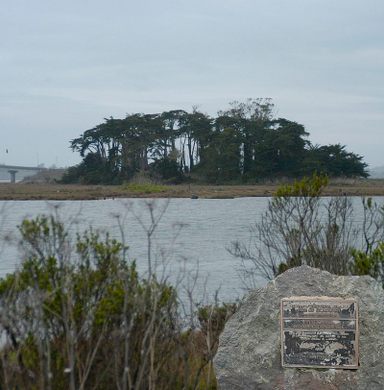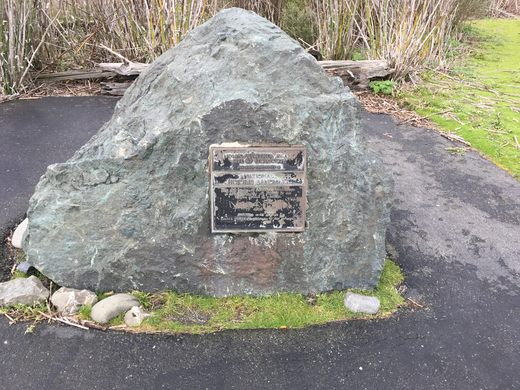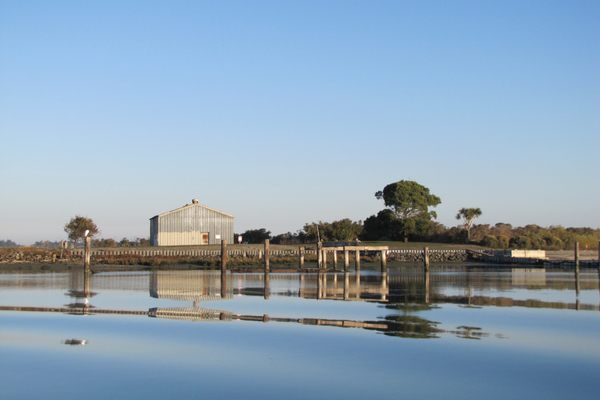Duluwat Island Plaque
A simple plaque remembers a California island massacre that claimed more than 100 lives.
Everyone who lives in the town of Eureka, California, knows where Indian Island is. Not many know why it was called “Indian Island” or why it was inaccessible, unlike nearby Woodley Island, which hosts restaurants and an active marina, or the Samoa Peninsula, which bookends Humboldt Bay directly across from Duluwat. But the buried history of this windswept, marshy landform, and its penitent beauty make it an intriguing enigma.
Prior to 1860, Duluwat, also called Indian Island, was home to the Wiyot village of Tuluwat. The ground beneath the village, is an enormous clamshell mound measuring over six acres in size and estimated to be over 1,000 years old. Contained within it are remnants of meals, tools, and ceremonies, as well as many burial sites.
Tulwat was the center of the physical and spiritual world for the Wiyot tribes. In the springtime, hundreds of people would gather for a massive celebration and ritual of cosmic renewal. The ceremony spanned several days, and like the White Deerskin Dance of neighboring nations, would have been elaborate and exquisite. Unfortunately, the exact practice of the Wiyot World Renewal was lost on the last weekend of February in 1860. That was when Duluwat became the epicenter of a genocide carried out by settlers who had been brought to the area by the California Gold Rush of the 1850s.
After the Indian Island Massacre (as it is commonly called in historical literature) the Indigenous residents who survived were forced to leave Duluwat so that the land could be developed by its new owner, Richard Gunther. He remained the island’s namesake for most of the 20th century, until it became property of the City of Eureka, and was colloquially referred to as Indian Island.
Beginning in the 1990s, Wiyot activists began advocating for the return of Duluwat, starting annual vigils memorializing the massacre and raising funds with bake sales and concerts. The tribe first purchased 1.5 acres of environmentally devastated land, and was later given 40 acres by the city. In 2014, the Wiyot were able to perform the World Renewal Ceremony for the first time since 1860. And on October 21, 2019, in an unprecedented move, the Eureka City Council officially returned the island of Duluwat to the Wiyot. The tribe continues to clean up the island, remove invasive plants, and reseed native ones. They also have plans to build a cultural center on Duluwat.
If you head north on Highway 255 from Eureka, follow the signs for Woodley Island Marina, and take Startare Drive all the way to the west terminus, you will find National Historic Landmark Site 67, which was dedicated in 1964. It is a plaque referring to “Indian/Gunther Island (Tolowat).” Looking out past the plaque, you can see the island. You will often find it blanketed with the white Snowy Egrets who inhabit Humboldt Bay.
Know Before You Go
Public access is only available to the marker on the western tip of Woodley Island. Contact the Wiyot Tribe for more information about Duluwat itself.














Follow us on Twitter to get the latest on the world's hidden wonders.
Like us on Facebook to get the latest on the world's hidden wonders.
Follow us on Twitter Like us on Facebook